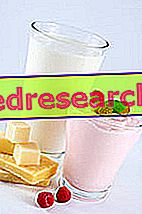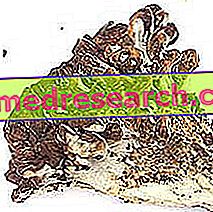The aging of the human body is influenced by numerous variables, some of which depend strictly on our lifestyle.
For example, among the factors on which it is possible to intervene positively to slow down aging are the diet, the level of stress and physical activity, inner well-being (mood, self-esteem, professional gratifications, etc.), the hours of night rest and abstention from cigarette smoking and drug use.
The Anti Aging Diet
What Does Anti Aging Diet Mean?

The Best Investment ...
In a social context in which the length of life and the commitments related to it increasingly tend to increase, putting at risk the sustainability of public health care models, it is more important than ever to invest in healthy aging from an early age .
In other words, it is important to try to ensure a healthy and physiological aging, which allows you to live your old age in an active, peaceful and as free of pathologies as possible.
... also in financial terms
The picture that is emerging for the future is that of increasingly effective health care, but increasingly less accessible to large sections of the population.
Given the future need to draw heavily on private spending on health care, one of the best investments to make is to immediately redefine one's diet and lifestyle, rethinking them in an anti-aging key.
What is the Anti Wrinkle Diet?
The so-called Anti-Wrinkle Diet is a special diet designed to slow down the functional and aesthetic aging of the skin. Antiaging Diet and Anti-wrinkle Diet have many points in common, so much so that they can be considered globally as a single type of diet.
Cardinal principles
Numerous and constantly increasing are the studies that try to investigate at different levels (experimental, clinical, epidemiological, etc.) the anti-aging properties of certain foods and dietary patterns.
As logic suggests, rather than searching for "miraculous" foods or supplements to be included in one's diet, it would be preferable to redefine the whole diet as a whole.
The Vision of Umberto Veronesi
One of the most famous researchers to have focused on the antiaging diet in Italy was the doctor Umberto Veronesi. According to the studies of the European Institute of Oncology in Milan (of which Veronesi was one of the founders), the antiaging diet should be based first and foremost on calorie restriction.
Calorie Restriction and Partial Fasting
The concept of caloric restriction means precisely restricting, limiting the intake of calories. On a practical level, it would be necessary to get up from the table with a little more appetite (indicatively with a 80% full stomach compared to what it would take to feel full).
In several experimental and epidemiological models it has been widely demonstrated that caloric restriction is one of the very few and true measures to extend life and reduce the risk of serious and deadly diseases such as cancer.
Attention however, calorie restriction does not mean undernourishment or malnutrition; it is simply a matter of making different food choices, preferring low-calorie foods (see below).
In some cases the experts even come to recommend semi-fasting, considered healthy if practiced occasionally after days of over-feeding (for example after Christmas binges or a ceremonial lunch). See also: Purifying Diet and Diet Mima Fasting.
Vegetarian diet
Umberto Veronesi was one of the major supporters of the vegetarian food style, considered important for both ethical and health issues. Beyond the ethical aspect, most studies and researchers agree that reducing animal food sources is beneficial to the body.
What to eat?
Below we list the most important dietary rules of the anti-aging diet, it being understood that these are general information, which at an individual level require contextualization and weighted application by a dietician or nutritionist.
vegetable
Fruits and vegetables, due to their high water content, are among the foods with the lowest caloric density (that is, they provide less calories for the same weight consumed). Ideal for a caloric restriction regime, they also contain important amounts of vitamins, mineral salts and antioxidants.
Some advices:
- Prefer fresh and seasonal fruits and vegetables: generally they guarantee a greater intake of micronutrients and antioxidants;
- Indicatively, the very colorful vegetables (blueberry, black grapes, red tomatoes, carrots, etc.) are also the richest in antioxidants;
- Prefer the consumption of whole fruit in smoothies and centrifuges; the latter are indicated for those who cannot tolerate high amounts of fiber in the diet;
- As for the fruit, prefer the non-sugary one; the fruits that are richer in sugar (bananas, ripe persimmons, grapes, etc.) are more suitable for the athletes or those who practice physically demanding jobs;
- From a practical point of view, consume 2 portions of seasonal vegetables a day and two portions of fresh seasonal fruit a day;
- It would be preferable to consume about 50% of the raw vegetables (without cooking);
- Avoid or drastically limit the consumption of fresh preserved fruit (candied fruit, syrup, dehydrated, jams, jams, fruit purées), industrial fruit juices and similar products (soft drinks, carbonated and sweetened fruit juice drinks etc. .);
- If you suffer from irritable bowel or in the transition from a diet low in fruit and vegetables to an antiaging diet, gradually increase the intake of vegetables and consume the fruit preferably alone and away from meals; this should guarantee better intestinal tolerability.
Cereals
A pillar of the Mediterranean diet, cereals are a fairly controversial food. In fact, due to the high energy density and the low intake of micronutrients, a diet rich in cereals and refined derivatives predisposes to overweight, obesity and related diseases. It is therefore necessary to define some rules to better contextualize these foods in the antiaging diet:
- Consume whole grains in about 50% of meals; for example, if you eat wholemeal bread for breakfast, you can have white rice for lunch or vice versa;
- Re-evaluate cereals and pseudocereals which are by now not very consumed (oats, barley, spelled, quinoa, millet, sorghum, amaranth, etc.) alternating with the classic ones (pearly rice, wheat); in this regard, see our video recipes:
- recipes with oats
- recipes with quinoa
- recipes with brown rice
- recipes with millet
- recipes with spelled
- recipes with amaranth
- Drastic reduction of cereals and refined derivatives compared to average western eating habits; for refined derivatives we mean substantially the white flours and the products that contain them in high percentage (sweets, focaccia, pizzas, traditional pasta, etc.)
These recommendations, like those seen for fruits and vegetables, are all the more valid the lower the daily caloric expenditure.
Therefore, more attention must be paid by people with a sedentary lifestyle, while sportsmen and workers engaged in heavy tasks can give more space to refined cereals.
Meat, Fish, Dairy and Industrial Products
If from an epidemiological point of view we go to see the areas of the world where we live longer and that have inspired anti-age food models (eg Cilento for the Mediterranean diet, island of Okinawa for caloric restriction), we realize that yes it deals mostly with coastal regions and / or living with local products.
In these rural areas, food is based on vegetables and vegetables from the garden, fruit from local trees, fish and possibly dairy products and wine; certainly the consumption of meat is always limited or very reduced.
Therefore, in the anti-aging diet it is important:
- Prefer so-called zero-kilometer products, making sure (especially in the case of meat, cheese and fish) of the health security of the products purchased;
- Prefer seasonal products (not only for fruit and vegetables, but also for fish);
- Drastically reduce, or better avoid, the consumption of industrial foods, limiting them the more the higher the level of preservation (much better is fresh meat compared to cured meats or canned meat, much better is fresh salmon than smoked salmon, much better fresh tomatoes compared to canned preserves, etc.);
- Prefer lean meats (chicken or turkey breast, lean cuts of beef and pork, horse etc.) compared to fatty meats;
- Avoid the consumption of smoked or otherwise preserved salami, meat or fish. Even the defatted raw ham, the turkey breast in tubs or the bresaola, despite being low in saturated fats should be consumed in moderation as they are rich in sodium (salt) and potentially harmful preservatives (such as nitrites and nitrates).
- From the practical life point:
- consume meat NOT more than once a day, still preferring white meats and, in the second instance, lean red meats;
- consume fish in at least two or three weekly meals, avoiding the systematic use of large fish (such as tuna, ventresca or swordfish); the Italian blue fish, in this sense, represents an excellent alternative, which also benefits from a low cost. When possible, prefer wild fish over breeding fish
- as an alternative to meat, consume alternative protein sources (eggs, legumes, soy derivatives such as tofu or tempeh, and light cheeses such as cottage or ricotta).
- For ideas and recipes based on vegetable meat click here
- take a fermented food regularly, such as yoghurt (vaccine or soy), kefir or tempeh, foods to which a beneficial role is attributed to the trophism of the intestinal bacterial flora, with positive effects on the digestive, metabolic and immune levels.
Vegetable oils, sugar, salt and alcohol
Vegetable oils are among the foods with the highest caloric density and it is therefore clear that their consumption should be carried out with extreme moderation. Furthermore, it would be important:
- Prefer raw consumption, avoiding use during cooking (especially if it occurs at high temperatures or prolonged periods);
- Prefer extra virgin olive oil (avoiding the cheaper products), alternating it with oils with a high omega-3 content (such as hemp oil).
- Eliminate or drastically limit animal fats, such as lard, lard and butter.
- As an alternative to olive oil, it is advisable to season the salad with seeds and oily dried fruit (walnuts, pumpkin seeds, flax seeds, chia seeds, etc.)
As for salt, the amount of sodium naturally contained in foods makes the addition of salt to dishes superfluous (from a nutritional point of view). Consequently, also considering the role of table salt in raising blood pressure, it is important:
- minimize the amount of salt added to foods; to accustom the palate, this reduction should be carried out gradually, replacing the salt with spices; some of these (such as turmeric, paprika and garlic) are a generous source of active ingredients that are useful in an anti-aging way (thanks to their anti-inflammatory, antioxidant, hypotensive, etc.)
White kitchen sugar is the typical empty calorie food (it brings a lot of energy without providing important nutrients like vitamins, mineral salts, essential fatty acids, etc.), As a result:
- in the antiaging diet the consumption of sugar should be limited as much as possible, both in terms of direct and indirect consumption (ie, foods rich in sugars such as sweets, desserts, jams, sugary and similar drinks);
- Some biscuits for breakfast, a spoonful of jam and some occasional sin of gluttony, together with the indispensable sugars of fruit, easily overcome the intake of simple sugars recommended for a healthy diet;
- The natural sweeteners alternative to sugar (maple syrup, agave syrup, honey etc.) must however be consumed with extreme moderation and alternatively (not in addition!) To white sugar;
- However, the use of artificial sweeteners (aspartame, saccharin, etc.) remains controversial; better to make limited use of it.
Wine, especially red wine, is considered by many to be an anti-aging food, as it would help reduce the risk of cardiovascular disease, diabetes mellitus and metabolic syndrome; this effect could be attributed both to the alcohol itself and to some antioxidant substances (resveratrol, anthocyanins etc.) contained above all in the skin of red grapes.
To obtain these presumed benefits it is fundamental that the consumption of wine is moderate (no more than one glass a day for women, no more than two glasses for men); a greater consumption, in fact, is associated with an increased risk of cardiovascular and hepatic diseases.
Examples of Antiaging Diet
A practical example of a daily anti-aging menu is present in this infographic, written by one of the companies most used in the research and production of antiaging food supplements with the X115® brand.

Antiaging supplements
The so-called Antiaging supplements come in handy when the individual is not able to feed himself by understanding all the various elements that the body needs, for example when frugal meals are often consumed for work reasons or when a lot of physical activity is practiced or there is exposes to other types of stress (changes in the season, recovery from illness, excessive sun exposure, etc.).
The most used anti-aging supplements include:
- antioxidant supplements : vitamins A (in the form of carotenoids), C and E, lipoic acid, catechins, quercetin, resveratrol, fruit extracts such as orange or blueberry, other polyphenols, etc.
- supplements for microcirculation function and antioxidant function: centella asiatica, red vine, rutin, horse chestnut, diosmin, witch hazel etc.
- anti-inflammatory supplements : curcumin, devil's claw, boswellia, omega three, fish oil, krill oil etc.
- supplements for the well-being of joints, skin and hair: collagen, MSM, sulfur amino acids, hyaluronic acid, copper, zinc
- supplements to support the immune system : vitamin C, glutamine, echinacea, uncaria, rodiola, eleuterococco, mistletoe etc.



